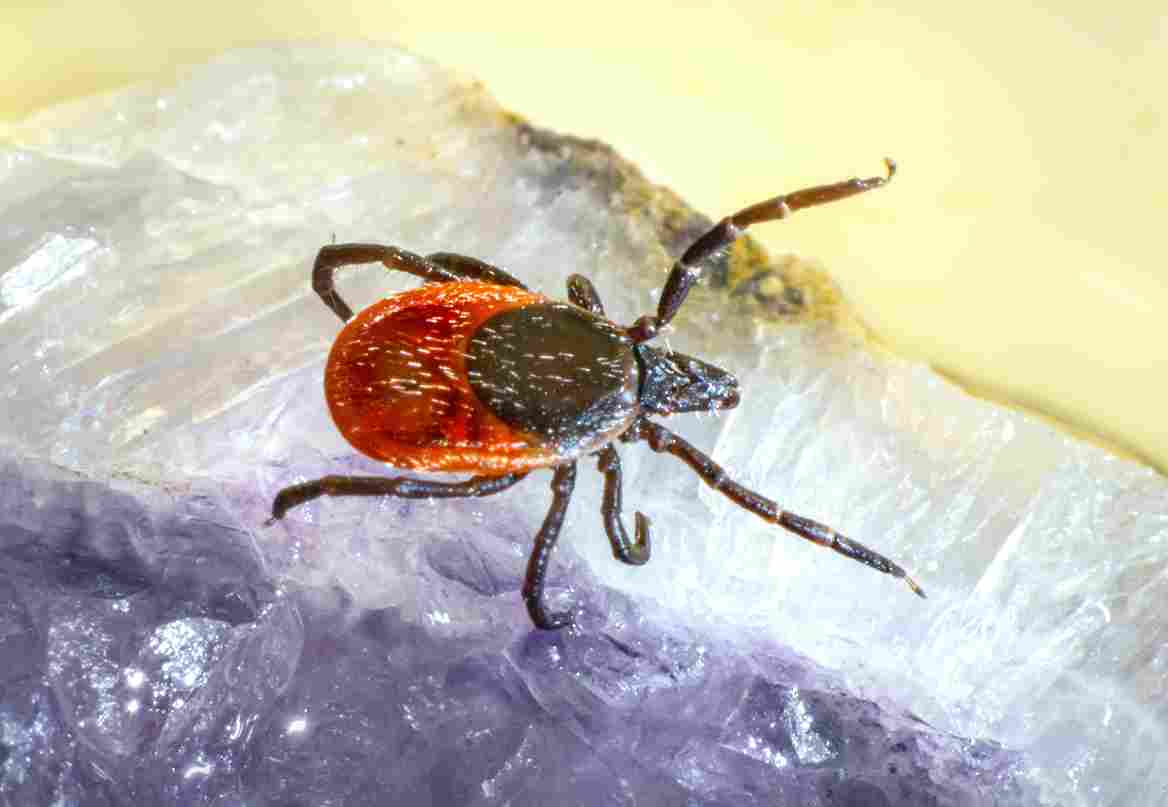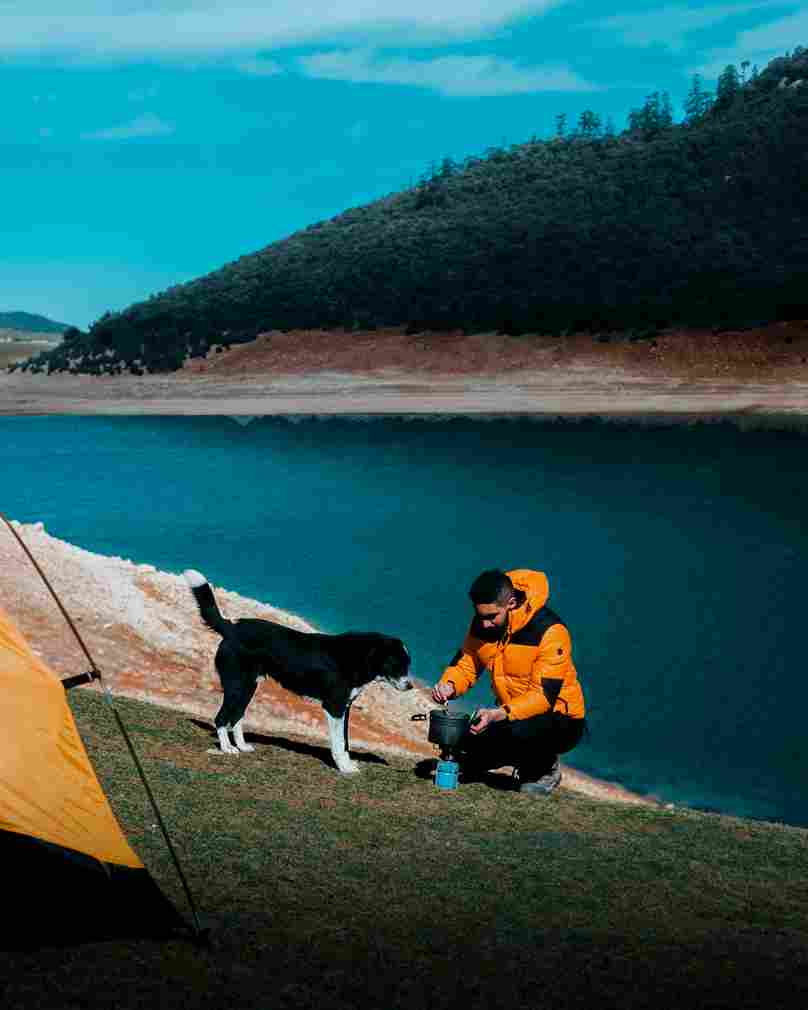
In many areas, ticks are an unavoidable part of camping, but that doesn’t mean you can’t take precautions to lessen your exposure to them. What you need to know about how ticks enter your campground and tent, as well as a few wise precautions you can take, are provided.
Ticks adore heavy undergrowth, piles of leaves, and tall grasses. Ticks are probably hiding if any of these are present at your campsite. While ticks cannot jump, they can attach to you as you move about the camp. Tick density is probably low at well-maintained campgrounds. On the other hand, you might pick up ticks while hiking and carry them back to the campsite with you.
What Is A Lyme Disease?

The bacteria Borrelia burgdorferi and Borrelia mayonii, which are carried and transmitted by deer ticks, are the two types that cause Lyme disease.
The saliva of a tick that has bitten a person or dog in the United States can spread disease to them.
When a tick bites a person or an animal, it securely clings onto the skin to feed and, if left unchecked, will gorge itself on the victim’s blood for days. The danger of disease transmission increases the longer a tick is on to your skin.
The majority of Lyme disease cases may be effectively treated with antibiotics, but preventing tick bites and avoiding ticks while hiking is still the best course of action in the United States, where more than 400,000 people are diagnosed with the condition each year.
Symptoms Of Lyme Disease in Humans
Bull’s-eye rash is the telltale symptom of Lyme disease, yet only 9% of those with Lyme disease actually have this rash.
The prevalence of other rashes is higher, and roughly 50% of infected individuals report having some kind of rash. Due to their resemblance to symptoms of other diseases like the flu or the common cold, additional Lyme disease symptoms are simple to overlook.
These signs include:
- Feverish illness resembling the flu
- Headache
- Extreme Tiredness
- Other Rashes (only 50% of people have them)
- Red Ear Lobes or Cheeks
- Jaw Pain
- Back and Neck Pain
- Aching and Swollen Joints
- A Bone Ache
Symptoms of Lyme Disease in Dogs

Although the symptoms of Lyme disease in dogs and people are extremely similar, the primary distinction is that your dog cannot communicate his discomfort. The following are signs of Lyme disease in dogs:
- Fever
- Reduced Appetite
- Decreased Energy
- Lameness (which may change, come and go, and persist)
- Generalised Soreness, Stiffness, or Agony Joint Swelling
10 Tips To Follow To Avoid Ticks While Camping
Apply The Appropriate Tick Repellent
Tick prevention measures such as essential oils for ticks are ineffective. While skin-applied tick repellents like DEET or picardin, which are not recommended for young children, do function, they also soon lose their effectiveness. Permethrin is regarded as the top tick repellent for camping because of these factors.
Permethrin is not applied to the skin, in contrast to other tick repellents. Instead, it goes on your shoes and clothes. Permethrin is frequently applied to tents and sleeping bags by campers. Even if you go through tick-infested areas, ticks won’t be carried back to camp because permethrin kills them on touch. Learn more about applying permethrin to eliminate ticks.
Tick Repellent Recommendations
- Premium Permethrin Insect Repellent
- Murphy’s Naturals Lemon Eucalyptus Oil Insect Repellent Spray
- Wondercide – Plant Based Natural Essential Oils – Mosquito and Insect Repellent
- Ben’s 100 Tick & Insect Repellent
- Repel Tick Defense
- Ben’s 30 Tick & Insect Repellent
Select A Campground That Carries Out Tick-Spraying
Nowadays, many campgrounds routinely spray for ticks. It makes sense to pick one of these campgrounds if you’re camping in a region where Lyme disease is a danger. Since it is rarely indicated on websites, you’ll probably need to phone the campground to receive this information.
Set Up Your Tent In A Bright & Open Area
Ticks love shaded, moist environments because they dry off rapidly. You’ll be able to prevent ticks more effectively if you set up camp in a bright spot, even though you might also like some shade over your tent. In order to avoid ticks, set up your tent in a clear place away from tall grass or piles of leaves.
Always Carry Chairs With You
On the ground or the logs you sit on, ticks can be hiding. To lessen the chance that ticks will attach themselves to you, think about carrying camping chairs.
Carry A Firewood Instead Of Gathering It
As you collect wood for your bonfire, ticks might easily land on you. Think about investing in firewood instead. In certain campgrounds, it is also necessary and is beneficial for the ecology.
Avoid Cutting Corners While At Camp
Instead, stay on the well-kept paths because ticks are less likely to be hiding there. Taking short cuts is bad camping manners regardless.
Maintain A Tucked-In Appearance
Keeping your garments tucked in is one of the most natural strategies to avoid being bitten by ticks. There won’t be as many spots for ticks to latch onto you. Additionally, tucking in delays the ticks’ ability to attach to your skin and attack you.
Pack-Up Your Dirty Clothes
Ticks are simple to carry inside the tent on your clothing. Don’t change your clothes inside the tent to prevent ticks from entering. To ensure that any ticks on the garment are captured, place dirty clothes inside a sealed plastic bag. Do the laundry and dry the clothes when you arrive home. Permethrin should be applied to any clothing that will be worn repeatedly while camping, such as hiking trousers or jackets.
Treat Your Dogs Before The Camping Trip
Your dog generally won’t be as careful to avoid tick-friendly areas as you are. Your dog’s ticks may easily land in the tent or on you. Apply a tick repellent to your dog before your camping trip to protect both you and your pet. In order to treat any bites, you’ll also want to make sure your dog’s first aid kit is filled.
Frequent Checks On Ticks
You can’t entirely keep ticks out of your campground, no matter how careful you are. When camping, thoroughly check for ticks at least twice each day. I often conduct the check as I get ready in the morning and once more before it gets too dark. Every time I stop on a walk, I’ve developed the practise of looking for ticks in prominent spots like my hips, armpits and ankles. Frequently, I can see the ticks before they have a chance to bite. I always have a tick removal tool with me in case one has attached itself.
Tick Tool Recommendations
- TickCheck Premium Tick Remover Kit
- TickCheck Tick Remover Value 3 Pack
- Homesake – Tick Remover Tool for Dogs, Cats & Humans
- TickCheck Premium Tick Remover Kit
Exclusive Tip:
You can subscribe us for a bi-weekly newsletter to get email notification of every blog we update and the most highly recommended camping products.
